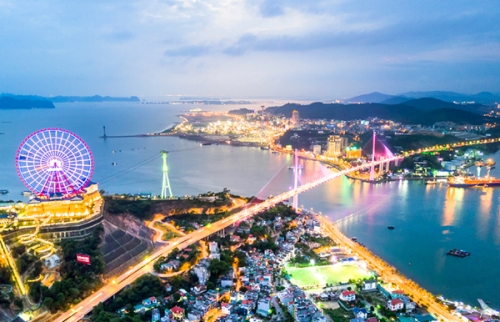PM asks for boosting development of key economic regions amid COVID-19 period
VGP – Prime Minister Nguyen Xuan Phuc has directed ministries, agencies and localities to boost the development of key economic regions, contributing to supporting the recovery of the economy amid COVID-19 pandemic period.
 |
|
Prime Minister Nguyen Xuan Phuc directs ministries, agencies and localities to boost the development of key economic regions, contributing to supporting the recovery of the economy amid COVID-19 pandemic period. |
He required relevant ministries and localities to review the implementation of mechanisms, policies on legal regulations on key economic zones, thus, proposing measures and solutions to issues related to finance, credit, industry, agriculture, commerce, service, transport infrastructure, land and resources.
The PM asked for preparing central and local budgets as well as launching specific mechanisms and policies to attract social resources for developing infrastructure projects, particularly transport projects, anti-flooding, anti-landslide and climate change adaption projects in the Mekong Delta to enhance economic development and improve the effectiveness and connectivity of localities between regions.
He stressed the need to establish action plans in line with specific measures to attract and welcome investment capital flows, focusing on big, high-tech, modern and environmental-friendly multi-national corporations.
Enhancing administrative procedure reform, practicing thrift, creating all favorable conditions for manufacturing and production for enterprises, investors and people as well as proposing preferential mechanisms in terms of capital and credit to attract investment in large-scale projects in prioritized sectors are also highlighted.
It is necessary to launch a suitable mobilization mechanism, especially mobilizing capital of local authorities or Government guarantee for localities in the regions to uphold the potentials and advantages to boost socio-economic development of localities, regions and the nation.
Accordingly, the Northern Key Economic Region should attract high-tech, processing, manufacturing, electronic, service, banking, finance and logistics projects to form research and high-tech centers to accelerate the application of science-technology and innovation.
The Central Key Economic Region should promote marine economy, automotive industry ecosystem, transportation services and tourism development in the Central and the Central Highlands.
The Southern Key Economic Region concentrates on attracting large-scale and high-tech investments to develop value chains and services and uphold the leading role of Ho Chi Minh City.
The Mekong Delta Key Economic Region should boost high-tech agriculture and agricultural processing industry as well as uphold the leading role in tourism and service of Phu Quoc Island in Kien Giang Province.
So far, Viet Nam houses four key economic zones namely the northern key economic region (comprising seven provinces and cities); the central key economic region (five provinces and cities), the southern key economic region (eight provinces and cities), and the Mekong Delta key economic region (four provinces and cities). The four key economic regions include 24 provinces and cities, accounting for 27.3% of the country’s total areas, 27% of the national population, and 89% of national GDP.
By Thuy Dung

